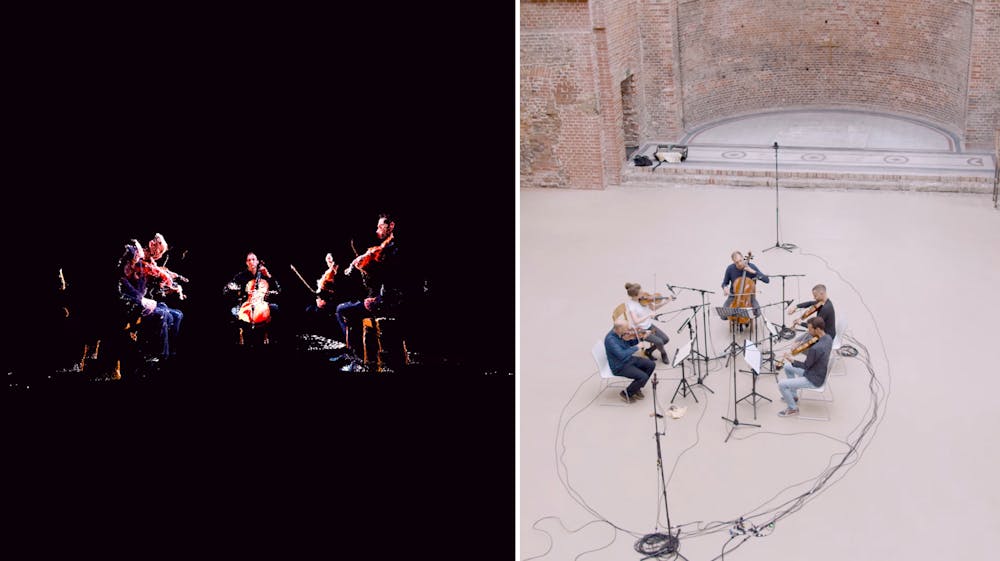The Mahler Chamber Orchestra, a world-renowned nomadic ensemble known for performing everything from Viennese classical and early Romantic periods to contemporary works, hosted four classical concerts from January 18 to 21 during Wintersession. The audience could move around, over, under, and even through the musicians, thanks to virtual reality. This was the North American premiere of the concert experience, which was pre-recorded in two historic Berlin churches over the span of three years. The event was sponsored by Princeton University Concerts (PUC).
Seconds after strapping on a bulky white headset, I found myself in the dimly lit St. Elisabeth-Kirche. Five musicians materialized before me, their facial features and figures clearly outlined. As Mozart’s “Allegro from String Quintet in G Minor, K. 516” started, the sound quality startled me: the notes’ slight echo made me feel as though I were actually in the old church. The volume of each instrument adjusted according to my proximity. I crouched by the first violin for the piercing melodies, put my ear under the cello to hear the steady bassline, and pretended to play along with the viola’s moving parts. For the first time, I was able to watch a classical concert from countless angles and move around freely — all while the visuals changed seamlessly as I roamed across the space.
For the second piece, Charles Ives’ “The Unanswered Question,” the string quartet was farther away on the altar and shrouded in a hazy, white glow. Contrary to Mozart’s Allegro vivacity, this piece sustained a steady, quiet beginning. The woodwind quartet stood on the right side of the church, fading in and out. Suddenly, a trumpet began playing right next to me, eventually disappearing after his solo. As he entered and exited, the trumpet player stood at varying distances from the altar, experimenting with the acoustics of the church. It was the only moving instrument — everyone else remained still. The headset perfectly mimicked real-life spatial sounds: I closed my eyes and could easily tell where each instrument was positioned.
Finally, Mendelssohn’s “A Midsummer Night’s Dream, Op. 61” unfolded in the full glamor of the full 45-person chamber orchestra in Meistersaal, another historic church in Berlin. According to VR creator Henrik Oppermann, each instrument and musician was represented as an abstract cluster of dots to create the visuals, and the sound was supplied from 99 microphones distributed around the orchestra. There were no visual or audio lags, allowing me to move comfortably through the concert. The immersive experience came to a climax as I walked through all the instruments playing simultaneously. I danced with the strings for the main theme, then strolled to the wind’s lively tunes, stood among the percussion players, and even tried conducting the orchestra.
The Mahler Chamber Orchestra’s VR concerts provided an intimate view into each part of the orchestra, allowing viewers to interact and listen closely to individual parts of the piece that normally could not be heard in person. As the only classical music Wintersession performance that took place on campus, the limited slots filled up quickly with 36 total students participating. The event was a unique opportunity for musicians and non-musicians alike to be a part of the orchestra.
Chloe Lau is a staff Prospect writer and a staff Features writer for the ‘Prince.’ She can be reached at chloelau@princeton.edu.








